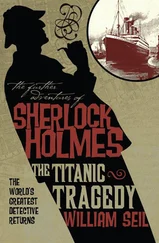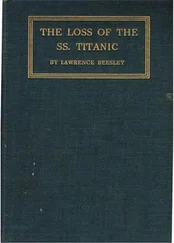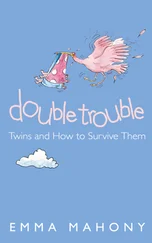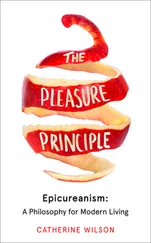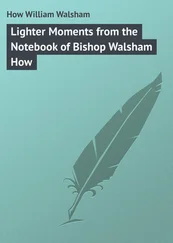13See Peter Parker, The Old Lie: The Great War and the Public School Ethos (Constable, 1987).
14Wilton Joseph Oldham, The Ismay Line: The White Star Line and the Ismay Family Story (Journal of Commerce, 1961), p. 42.
15John Galsworthy, The Country House (Heinemann, 1907), p. 58.
16Horace Annesley Vachell, The Hill: A Romance of Friendship (John Murray, 1905), pp. 24–89.
17Oldham, The Ismay Line, p. xxvii.
18Thomas Ismay can be compared to the media tycoon, Robert Maxwell, another self-made man who was by turns charming and monstrous. Maxwell ran his home, Headington Hill House, as though he were the ruler of a small province, controlling the decisions and behaviour of his nine children and receiving unconditional devotion from the wife he would ridicule in public. In 1968, he gave an interview in The Times where he explained that he did not have good working relations with men because ‘they tend to be too independent. Men like to have individuality.’ What Maxwell was looking for, he said, was not a man with a mind of his own but ‘an extension of the boss’.
19Andrew Saint, Richard Norman Shaw (New Haven, 1976), p. 261.
20Ibid.
21I bid.
22Lt Colonel Frank Bustard, Titanic Commutator, June 1974.
23Basil Sanderson, Ships and Sealing Wax: The Memoirs of Basil, Lord Sanderson of Ayot (Heinemann, 1967), p. 2.
24 Truth, 12 April 1888.
25Sanderson, Ships and Sealing Wax, p. ii.
26Pauline Matarasso, A Voyage Closed and Done (Michael Russell, 2005), p. 17.
27Ibid.
28Twenty-seven of Margaret Ismay’s pocket diaries are kept in the Ismay archive at the National Maritime Museum.
29Quoted in Paul Louden-Brown, The White Star Line: An Illustrated History 1870–1934 (Ship Pictorial, 1991), p. v.
30US Senate Inquiry Proceedings, ‘There is nobody left in the firm except myself. It is practically a dead letter now to all intents and purposes.’
31Jean Strouse, Morgan: American Financier (Random House, 1999), p. x.
32Ibid., p. 394.
33Ibid., p. 474.
34Ibid., p. 467.
35Albert Ballin to the German Embassy in London, quoted in Strouse, p. 463.
36LMQ/3/6.
37Strouse, Morgan: American Financier, p. 463.
38Ibid., p. 477.
39Alan Frederick Lewis, The Great Pierpont Morgan (Gollancz, 1949), p. 282.
40Oldham, The Ismay Line, p. 146.
41Ibid.
42Ibid., p. 152.
43To Sir Clinton Dawkins, quoted in Oldham, The Ismay Line, p. 158.
44 The Times, 3 December 1903.
45Oldham, The Ismay Line, p. 145.
46Michael Moss and John R. Hume, Shipbuilders to the World: 125 Years of Harland & Wolff, Belfast, 1861-1986 (Blackstaff, 1986), p. 92.
47Oldham, The Ismay Line, p. 140.
48Moss and Hume, Shipbuilders to the World, p. 108.
49Oldham, The Ismay Line, p. 161.
50Filson Young, Titanic (Grant Richards, 1912), p. 12.
51R. A. Fletcher, Travelling Palaces, p. 225.
52Oldham, The Ismay Line, p. 171.
53On the night of the disaster, James Ismay is said to have come out of his coma and said, ‘Bruce is in trouble, Bruce is in trouble.’
54LMQ/1/3.
55 The Titanic Commutator, Vol. 11, No. 3, 1987, p. 41.
56Oldham, The Ismay Line, p. 18.
Chapter 4: These Bumble-like Proceedings
1Robert Hughes, The Real New York (Hutchinson, 1905), p. 50.
2James Remington McCarthy, Peacock Alley: The Romance of the Waldorf Astoria (Harper, 1931), p. 163.
3This is also pointed out by Filson Young, Titanic, p. 81.
4Strouse, Morgan: American Financier, p. 643.
5Lightoller, ‘ Titanic ’ , p. 301.
6 Daily Telegraph, 22 April 1912.
7Edward Hungerford, The Story of the WaldorfAstoria (The Knickerbocker Press, 1925), p. 131.
8Stephen Biel, Down with the Old Canoe: A Cultural History of the Titanic Disaster (W. W. Norton, 1996), p. 30.
9Ben Proctor, William Randolph Hearst, the Later Years (Oxford University Press, 2007), p. 5.
10Quoted in Michael Davie, The Titanic: The Full Story of a Tragedy (Bodley Head, 1986), p. 156.
11Ibid.
12Following the wreck of the Titanic, the publishers of Futility reissued the book as The Wreck of the Titan.
13Lightoller, ’Titanic’, p. 303.
14Patrick Stenson, Lights: The Odyssey of CHLightoller (London, 1984), p. 206.
15Lightoller, ’Titanic’, p. 287.
16LMQ/7/1/20.
17Lightoller, ’Titanic’, p. 285.
18Louise Patten, Good as Gold (Quercus, 20i0), p. 24i.
19Lightoller, ’Titanic’, p. 277.
20Ibid., p. 282.
21Ibid., p. 305.
22Ibid., p. 288.
23George Behe, On Board the RMS Titanic: Memories of the Maiden Voyage (Lulu.com, 2011), p. 335.
24H. M. Marriot, The Life and Letters of John Galsworthy (William Heinemann, 1935), p. 340.
25Sigmund Freud, Fragment of an Analysis of Hysteria in The Penguin Freud Reader, ed. Adam Phillips (Penguin, 2006), p. 443.
Chapter 5: The Convergence of the Twain
1Conrad, letter to James B. Pinker, 22 April 1912, The Collected Letters of Joseph Conrad, edited by Frederick R. Karl and Laurence Davies (Cambridge University Press, 1983-2008), Vol. 5.
2Conrad, letter to Ted Sanderson, 12 October 1912, Collected Letters, Vol. 2.
3Norman Sherry, Conrad’s Eastern World (Cambridge University Press, 1966), p. 86.
4Conrad, letter to Galsworthy, 20 July 1900, Collected Letters, Vol. 2.
5Albert Guerard, Conrad the Novelist (Harvard, 1958), p. 142.
6Conrad, Author’s Note, Youth, Heart of Darkness, The End of the Tether (J. M. Dent and Sons, 1902), p. vi.
7Conrad, to John Quinn, 10 May 1912, Collected Letters, Vol. 5.
8Conrad, Notes on Life and Letters (J. M. Dent and Sons, 1921).
9Ibid.
10Virginia Woolf, ‘Joseph Conrad’, Collected Essays (London, 1968), vol 1:302.
11Quoted in Zdzislaw Najder, Joseph Conrad: A Life, translated by Halina Najder (Camden House, 2007), pp. 31-5.
12Conrad, A Personal Record: Some Reminiscences (J. M. Dent and Sons, 1919), p. 194.
13Najder, Joseph Conrad, p. 41.
14Ibid., pp. 182-3.
15Conrad to Agnes Sanderson, 22 April 1896, Collected Letters, Vol. 9.
Chapter 6: The Secret Sharer
1TRNISM 1/1.
2LMQ/7/2/32.
3Thayer, The Sinking of the SS Titanic, pp. 29–30.
4The letters from Ismay to Marian Thayer, sections of which have been published in Pauline Matarasso, A Voyage Closed and Done, are in private hands.
5TRNISM/1/1.
6Wilton Oldham, ‘The Titanic and the Chairman’, The Titanic Commutator, Vol. 13, No. 2, 1989, p. 25.
7Oldham, The Ismay Line, pp. 219–20.
8TRNISM/1/1.
9Ibid.
10‘The Titanic and the Chairman’, The Titanic Commutator, Vol. 13, No. 3, 1989, p. 46.
11Oldham, The Ismay Line, pp. 220–24.
12John Masefield, Manchester Guardian, 16 October 1912.
13In ‘The Titanic and the Chairman’, his sequel to The Ismay Line, Wilton Oldham describes wanting to be Ismay’s secret sharer himself. ‘Bruce Ismay would have talked about it [the Titanic ] with the right person, who had a sympathetic understanding and who was a complete outsider. I am not praising myself at all but Mrs Bruce Ismay, her sister Mrs Bower Ismay, Bruce Ismay’s favourite child, Mrs Margaret Cheape, and Mrs Mary Quirk, a very old friend of the family, have all said that he would have talked to me if I had known him.’ (Titanic Commutator, Vol. 12, No. 1).
Читать дальше

